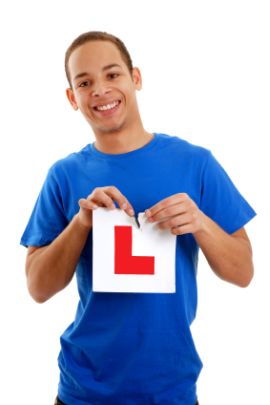Taking the theory test if you don't speak English
Not everyone who takes the Driving Theory Test will be confident enough in their ability to speak and understand English to take the test. Whilst some people in Wales will want to take the test in Welsh being their first language, and similarly others with a good command of English may still wish to take the test in their first language where possible.
There are a wide range of different languages that you can take the test in. The way that this works is that you get a voiceover in a particular language, and there are 21 different languages to choose from at time of writing.
This lets you hear the instructions and questions directly through a set of headphones you are given with the test. The questions get read out to you and then you hear the possible answers by pressing the text on the screen. You can hear questions as many times is you want to - just press the appropriate text of the question on screen to hear it again.
The languages that are available are, in alphabetical order: Albanian, Arabic, Bengali, Cantonese, Dari, English, Farsi, Gujarati, Hindi, Kashmiri, Kurdish, Mirpuri, Polish, Portuguese, Punjabi, Pushto, Spanish, Tamil, Turkish, Urdu, Welsh
So whether you want to take an Urdu theory test, a Punjabi theory test, a Polish theory test or indeed any of the other languages above, you can do.
But what if the language you require is not on offer? Well, in those circumstances there is still the option of having an approved DSA translator on hand to translate the questions for you to answer. You must pay the fees for that person.
Related Articles...
Tips on driving in half light
Most drivers prefer driving in the day in good light in optimum road conditions, because these are the best conditions in which to see exactly what is going on in the road.
However there are...
Working out what a road sign means
There are many signs that you will see day in day out as a driver and are obvious to understand. For instance signs that tell you the maximum speed limit on the road you're on. For some reason,...
Professional driving instructors
When you learn to drive, you have the choice who teaches you. The majority of people decide to learn through a professional driving instructor and often through a major school of...
Types of brakes and braking system
The brakes on your car are one of the most important elements of the car, and when you learn the ABC of accelerator, brake and clutch you realise if you hadn't already how to standardly operate the...
Vulnerable road users - pedestrians
Pedestrians whether old or young are all potentially vulnerable. Any impact at all on a pedestrian is potentially fatal, and that goes for a pedestrian of any age.
Of course within the class...
Your vehicle's age is important
The age of your car is important for several reasons.
The main reason is that if your car is under three years old, there are four documents that you must be in possession of in relation to...
Tips on joining a motorway
Joining and leaving the motorway are generally considered the more tricky elements of the journey. When it comes to leaving the motorway, it is all about selecting the right exit and moving over to...
Tips on driving with a heavy load
When you have passed your test and been driving for a while, you might find yourself driving with a heavy load.
For instance if you are going on holiday then you might have lots of stuff that...
What to do if horses are on the road
It may sound quite rare, but actually on country journeys you will from time to time encounter horses and their riders using the road. And you may also come across other animals too.
When you...
Why communication matters
When you are driving, in the vast majority of occasions there will be at least a fair number of other road users on them at the same time as you. This means that they will be reacting to how YOU...
Back to home page of driving theory test questions

